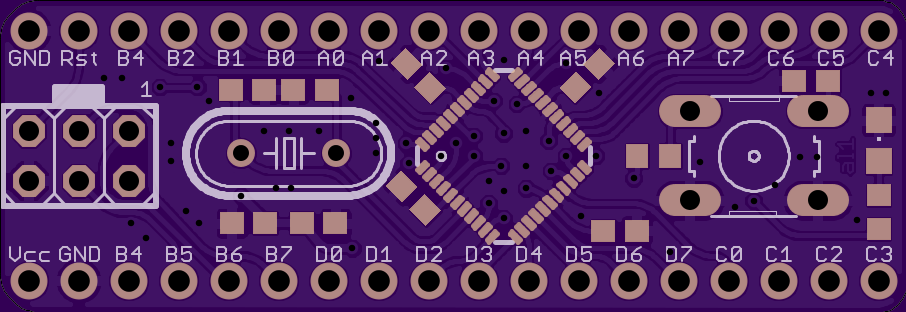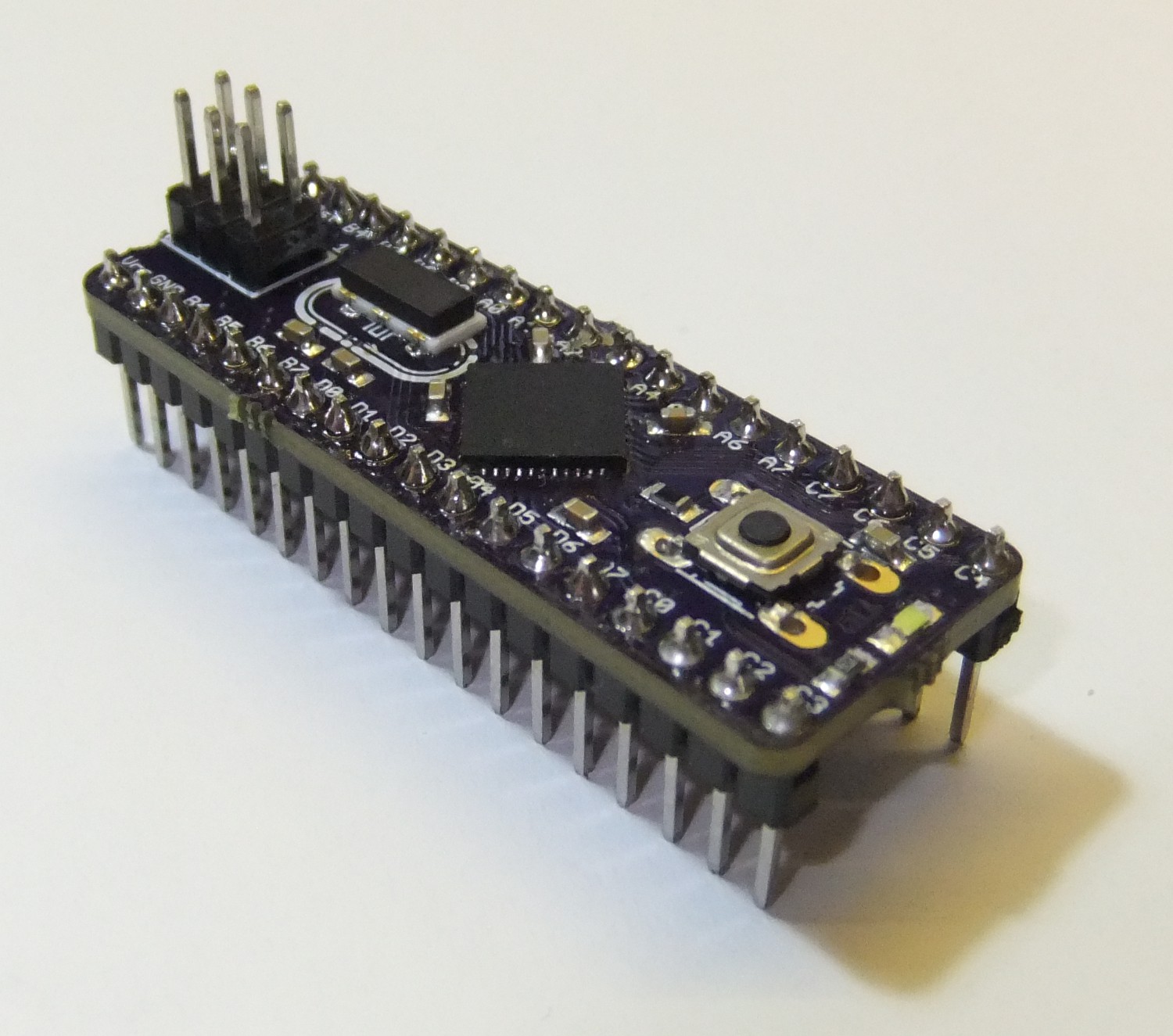When using the Atmega32 in the VQFN package and when you do not use the bottom pad. You can made this board even smaller:

The data sheet recommends to use the bottom pad, but without using it you have some pace for traces and vias under the chip. Soldering the micro was quite tricky but it works after some rework:
When assembling the board I used a SMD button which fits on the footprint of THT button. I alos did not used a standard crystal. instead I used a ceramic resonator I had laying around - it does fits on the footprints of the crystal and the crystal's capacitors.
Note: There is an error in the silkscreen: The pin labeled B4 next to B2 is pin B3
 Alex
Alex
Discussions
Become a Hackaday.io Member
Create an account to leave a comment. Already have an account? Log In.
I like the use of SMD components on THT footprints, right up my alley ;)
Are you sure? yes | no